- The building, intended to be a hotel, is what gave ‘Hotel Street’ its name
- The first floor ballroom was originally used for banquets, balls, meetings and auctions
- After spending many years under different owners it is now used for its original intention; as a social space and boutique hotel
The hotel that never was
This elegant Georgian building, completed in 1800, was originally intended to be Leicester´s first hotel, which is how Hotel Street got its name. The developer ran out of money and so the building was completed by public subscription by a group of gentlemen (including the Duke of Rutland) and local businessmen. It was opened as the Assembly Rooms in time for the annual gathering of aristocracy and gentry at Leicester Races in September 1800. According to a local newspaper:
‘Our Races were attended by a greater number of Noblemen and Gentleman than has been known for several years back. The Assemblies at the New Hotel Assembly Room (which was opened for the first time) boasted an abundance of beauty and fashion…’.
“The first modern ornament of the town”
Designed by local architect John Johnson, the Assembly Rooms included a ballroom of ‘spacious dimensions’ - 75’ long, 33’ wide and 30’ high that ran the whole length of the first floor, with large windows to admit the light, and wall and ceiling paintings by the artist Ramsay Richard Reinagle. This was reached by a single staircase from the ground floor, dividing into two on a landing. Susannah Watts, describing the building in A Walk Through Leicester in 1804, wrote that:
‘It may, from the grandeur of its windows, its statues, bassi relievi, and other decorations, be justly considered as the first modern architectural ornament of the town… Uniting under the same roof, every convenience for the gratification of taste, and the amusement of the mind, a coffee room handsomely furnished and supplied with all the London papers, affords the gentlemen of the town and country as well as the stranger, to whom its door is open, an agreeable and commodious resort, while on the opposite side a spacious bookseller’s shop furnishes the literary enquirer with a series of all the new publications’.
The ballroom was used for banquets, balls, meetings and auctions. The ground floor was used as a coffee room “supplied with all the London papers” and “handsomely furnished”. The figures of the Comic and Lyric Muses on the exterior, along with the carved friezes above them, were the work of John Charles Felix Rossi and John Bingley.
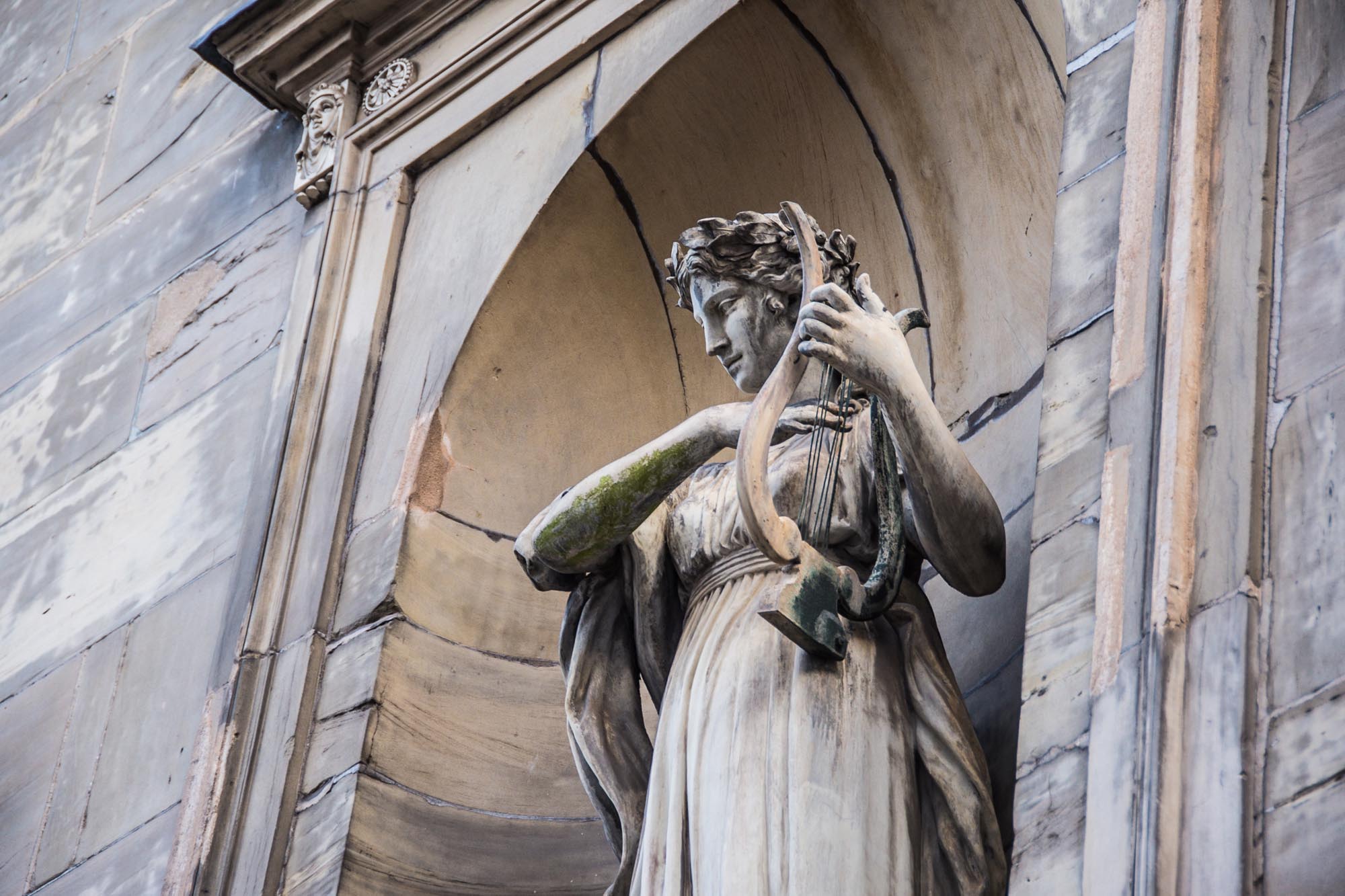
Judges' Lodgings and a repository for public records
In 1817 the Assembly Rooms were sold to the county Justices of the Peace for use as Judges’ Lodgings during the Court Assizes. The petition for an Act of Parliament to raise money for the purpose also referred to a need for a place for the ‘safe deposit of public records’. There seems to be no record of the purchase price itself, but it was agreed at the Quarter Sessions of Easter 1818 to spend up to £1500 on repairs and alterations to make the premises suitable for these purposes. A similar sum was agreed for furniture for the Judges. The refurbishment work was completed by 1819, including an extension towards the Market Place, in a similar classical style but built of brick covered in stucco to give it a smooth surface. This later housed the County Fire Office.
From Assembly Rooms to County Rooms
The word ‘Hotel’ was removed from above the porch at this time, and the stones at the top inscribed ‘Assembly Rooms’ were reversed, remaining visible only from the inside of the parapet. However, local newspapers and other documents still referred to the building as either the Assembly Rooms or the County Assembly Rooms for years to come, until it eventually became simply the ‘County Rooms’, continuing to host the annual Race Balls and similar social events.
The Race Ball of September 1841 was said to be ‘fashionably and numerously attended… and dancing was kept up to a late hour’. For the same event four years later the local band of Nicholson and Weston, which played at many such events, was joined by musicians from London venues including Vauxhall Gardens and the Haymarket Theatre.
A return to the days of Georgian splendour
From the late 1880s ownership of the building passed to the new Leicestershire County Council and in 1986 transferred to the City Council, then acquiring its current name of the City Rooms. In 2006, following a two year restoration project by a private developer, the City Rooms reopened once again for the purposes for which they were originally intended – social functions, and as a boutique hotel.
Gallery
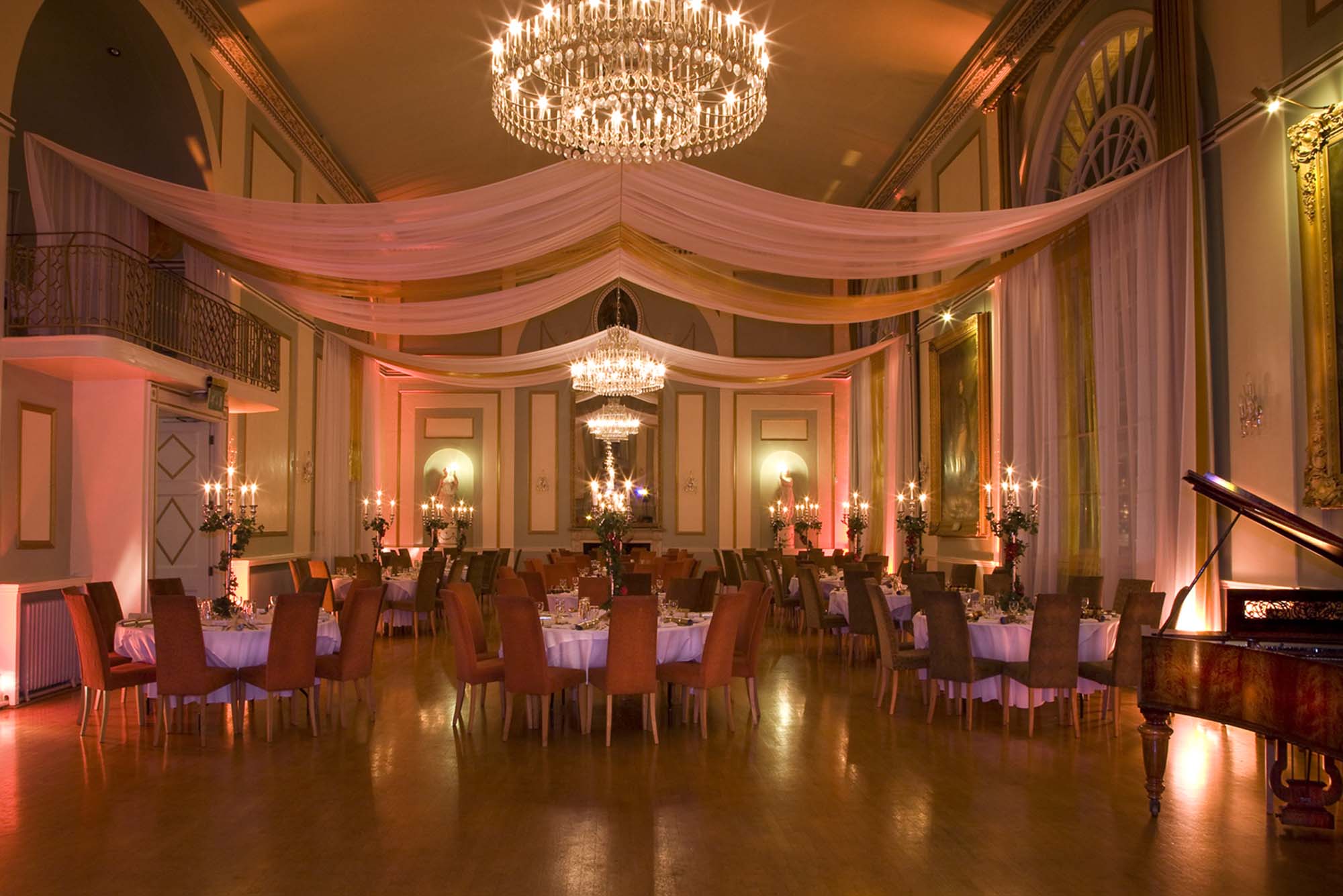
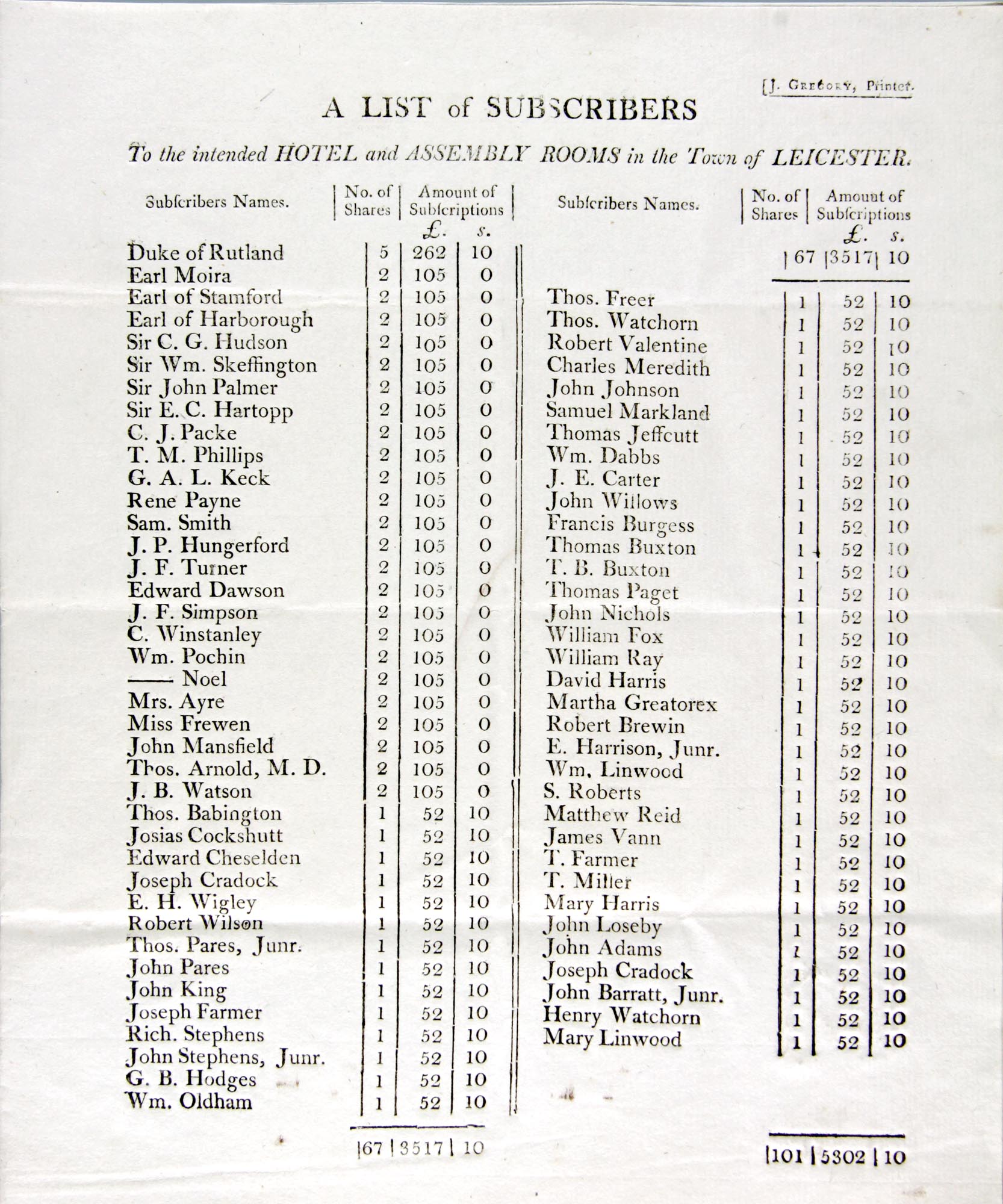
Leicestershire Record Office
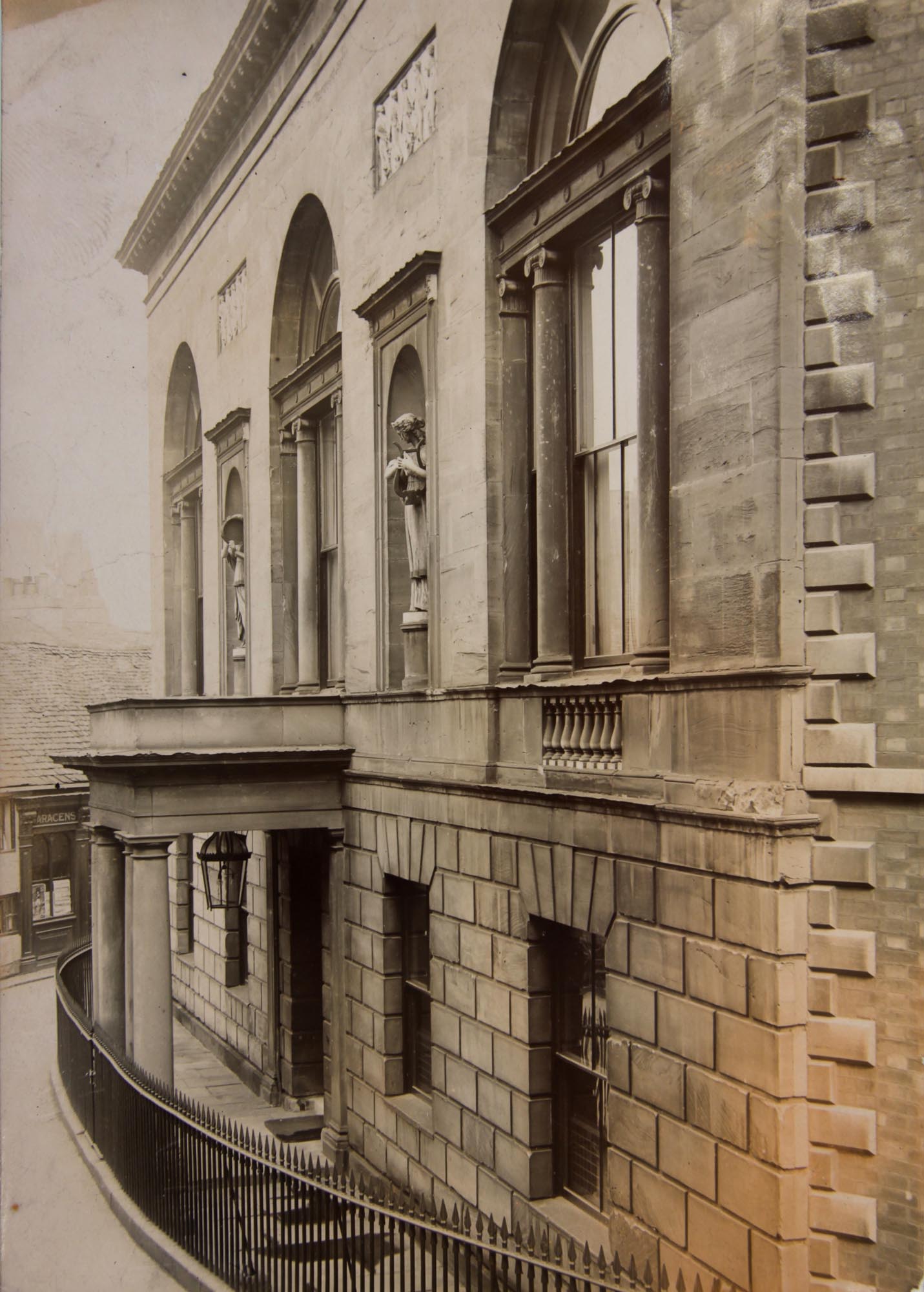
Leicestershire Record Office

Leicestershire Record Office
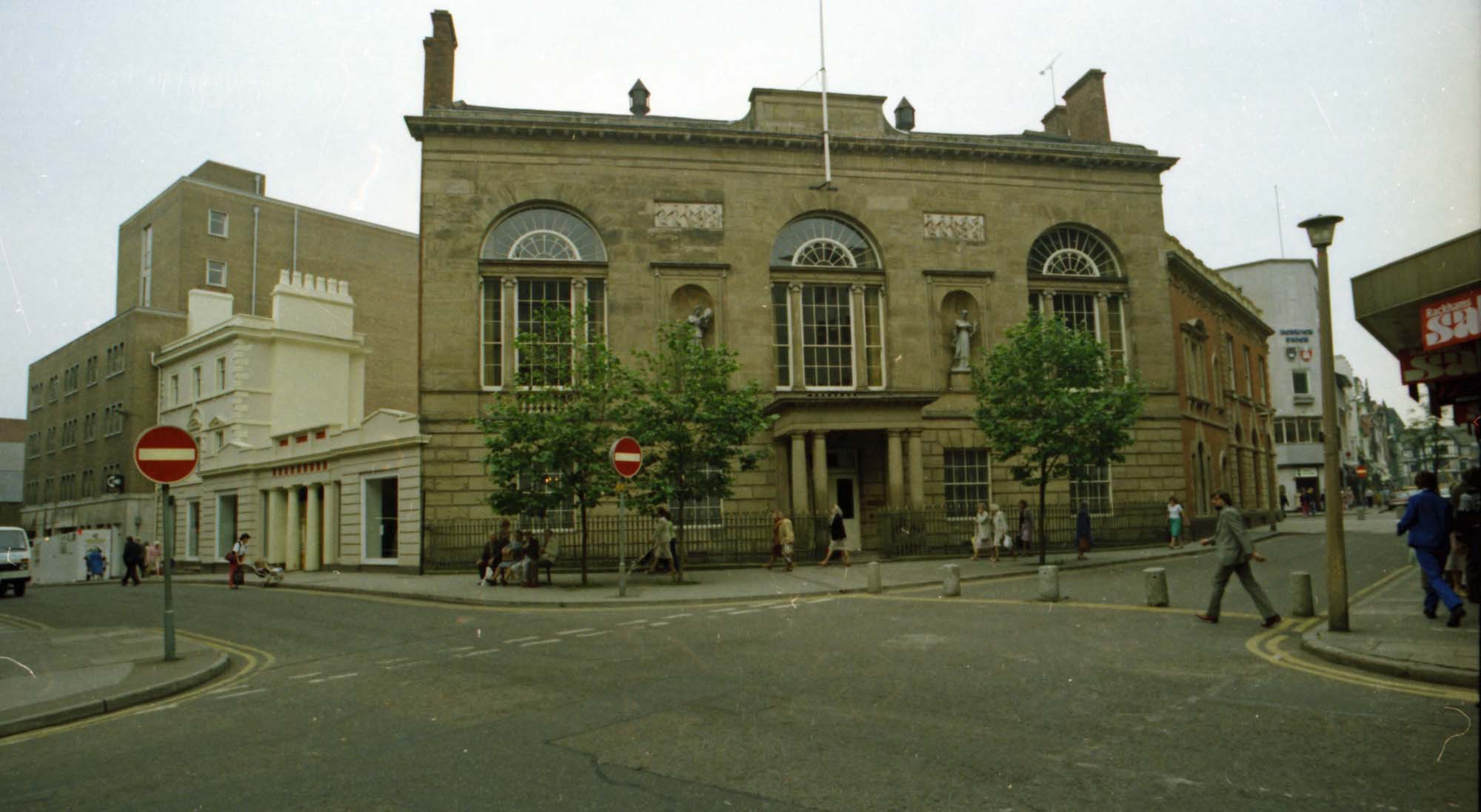
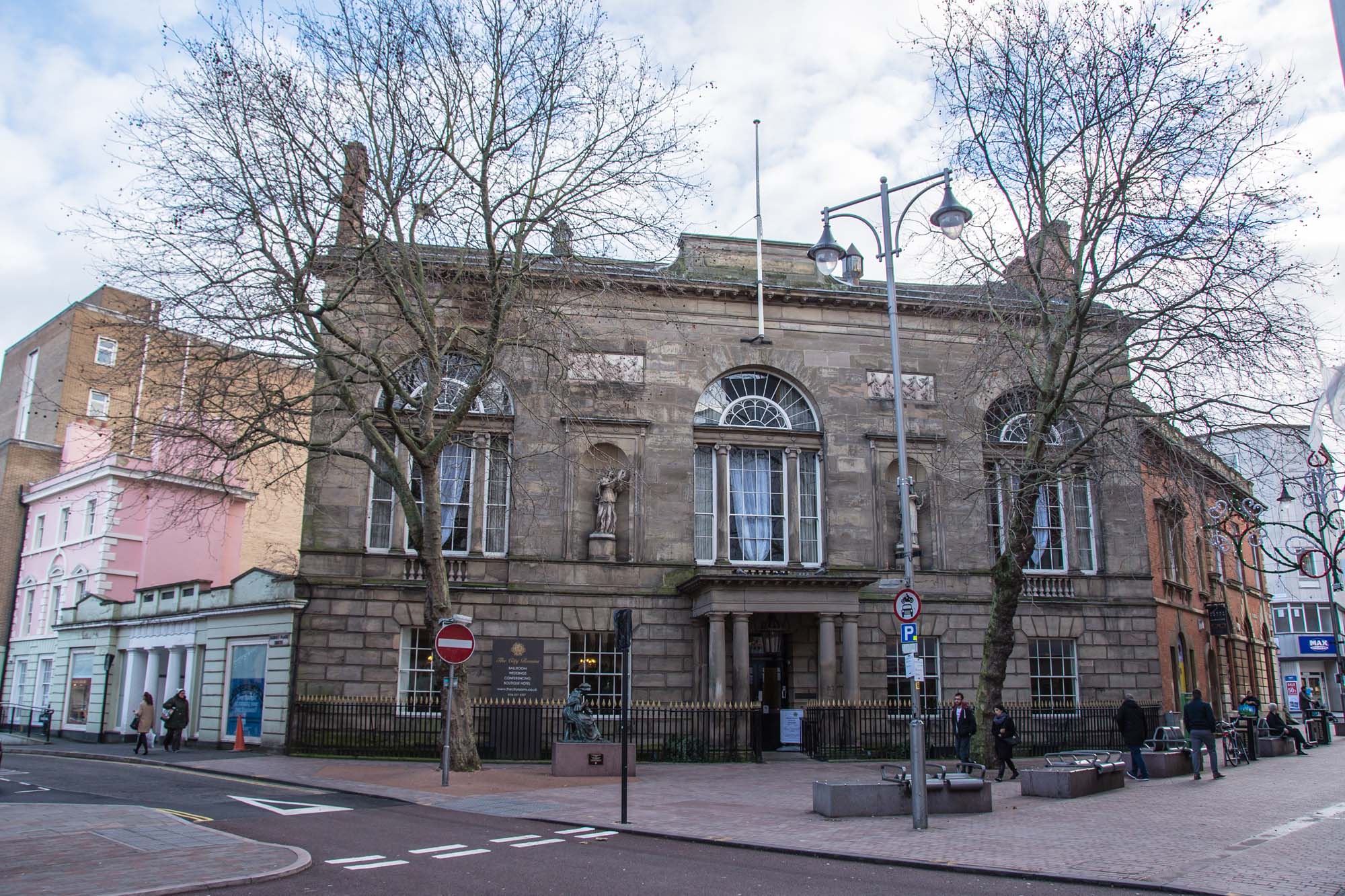

Roman Leicester
(47- 500) A military fort was erected, attracting traders and a growing civilian community to Leicester (known as Ratae Corieltauvorum to the Romans). The town steadily grew throughout the reign of the Romans.
Medieval Leicester
(500 – 1500) The early years of this period was one of unrest with Saxon, Danes and Norman invaders having their influences over the town. Later, of course, came Richard III and the final battle of the Wars of the Roses was fought on Leicester’s doorstep.
-
The Castle Motte1068

-
Leicester Cathedral1086

-
St Mary de Castro1107

-
Leicester Abbey1138

-
Leicester Castle1150

-
Grey Friars1231

-
The Streets of Medieval Leicester1265

-
Leicester Market1298

-
Trinity Hospital and Chapel1330

-
Bow Bridgecirca 1350

-
Church of the Annunciation1353

-
John O’Gaunt’s Cellar1361

-
St John's Stone1381

-
Leicester Guildhall1390

-
The Magazine1400

-
The Blue Boar Inn1400

-
The High Cross1577

Tudor & Stuart Leicester
(1500 – 1700) The wool trade flourished in Leicester with one local, a former mayor named William Wigston, making his fortune. During the English Civil War a bloody battle was fought as the forces of King Charles I laid siege to the town.
Georgian Leicester
(1700 – 1837) The knitting industry had really stared to take hold and Leicester was fast becoming the main centre of hosiery manufacture in Britain. This new prosperity was reflected throughout the town with broader, paved streets lined with elegant brick buildings and genteel residences.
-
Great Meeting Unitarian Chapel1708

-
The Globe1720

-
17 Friar Lane1759

-
Black Annis and Dane Hills1764

-
Leicester Royal Infirmary1771

-
New Walk1785

-
Freemasons’ Hall1790

-
Gaols in the City1791

-
Friars Mill1794

-
City Rooms1800

-
Development of Highfields1800

-
Wesleyan Chapel1815

-
20 Glebe Street1820

-
Charles Street Baptist Chapel1830

-
Glenfield Tunnel1832

-
James Cook1832

Victorian Leicester
(1837 – 1901) The industrial revolution had a huge effect on Leicester resulting in the population growing from 40,000 to 212,000 during this period. Many of Leicester's most iconic buildings were erected during this time as wealthy Victorians made their mark on the town.
-
Leicester Union Workhouse1839

-
Campbell Street and London Road Railway Stations1840

-
The Vulcan Works1842

-
Belvoir Street Chapel1845

-
Welford Road Cemetery1849

-
Leicester Museum & Art Gallery1849

-
King Street1850

-
Cook’s Temperance Hall & Hotel1853

-
Amos Sherriff1856

-
Weighbridge Toll Collector’s House1860

-
4 Belmont Villas1862

-
Top Hat Terrace1864

-
Corah and Sons - St Margaret's Works1865

-
Kirby & West Dairy1865

-
The Clock Tower1868

-
Wimbledon Works1870

-
The Leicestershire Banking Company1871

-
St Mark’s Church and School1872

-
Victorian Turkish Baths1872

-
The Town Hall1876

-
Central Fire Stations1876

-
Aylestone Road Gas Works and Gas Museum1879

-
Gas Workers Cottages1879

-
Leicestershire County Cricket Club1879

-
Welford Road Tigers Rugby Club1880

-
Secular Hall1881

-
Development of Highfields1800

-
Abbey Park1881

-
Abbey Park Buildings1881

-
Victoria Park and Lutyens War Memorial1883

-
Leicester Fosse FC 18841884

-
Leicester Coffee and Cocoa Company Coffee Houses1885

-
St Barnabas Church and Vicarage1886

-
Abbey Pumping Station1891

-
Luke Turner & Co. Ltd.1893

-
West Bridge Station1893

-
Thomas Cook Building1894

-
The White House1896

-
Alexandra House1897

-
Leicester Boys Club1897

-
Grand Hotel and General Newsroom1898

-
Highfield Street Synagogue1898

-
Western Park1899

-
Asfordby Street Police Station1899

-
Leicester Central Railway Station1899

Edwardian Leicester
(1901 – 1910) Electric trams came to the streets of Leicester and increased literacy among the citizens led to many becoming politicised. The famous 1905 ‘March of the Unemployed to London’ left from Leicester market when 30,000 people came to witness the historic event.
-
YMCA Building1900

-
The Palace Theatre1901

-
Pares's Bank1901

-
Coronation Buildings1902

-
Halfords1902

-
High Street1904

-
George Biddles and Leicester's Boxing Heritage1904

-
Municipal Library1905

-
Leicester Boys Club1897

-
The Marquis Wellington1907

-
Guild Hall Colton Street1909

-
Women's Social and Political Union Shop1910

-
Turkey Café1901

Early 20th Century Leicester
(1910 – 1973) The diverse industrial base meant Leicester was able to cope with the economic challenges of the 1920s and 1930s. New light engineering businesses, such as typewriter and scientific instrument making, complemented the more traditional industries of hosiery and footwear manufacturing.
-
Dryad Handicrafts1912

-
De Montfort Hall1913

-
Leicester During the First World War1914

-
Fox’s Glacier Mints1918

-
Statue of Liberty1919

-
Housing in Saffron Lane1924

-
Winstanley House1925

-
Housing in North Braunstone1926

-
Lancaster Road Fire Station1927

-
The Little Theatre1930

-
Saffron Hill Cemetery1931

-
Braunstone Hall Junior School1932

-
Former City Police Headquarters1933

-
Savoy Cinema1937

-
Eliane Sophie Plewman1937
-
City Hall1938

-
Athena - The Odeon Cinema1938

-
The Blitz in Highfields1940

-
Freeman, Hardy and Willis - Leicester Blitz1940

-
Leicester Airport1942

-
Leicester’s Windrush Generations1948

-
Netherhall Estate1950
-
Housing at Eyres Monsell1951

-
Silver Street and The Lanes1960

-
Bostik1960

-
Auto-Magic Car Park (Lee Circle)1961

-
University of Leicester Engineering Building1963

-
Sue Townsend Theatre1963

-
Central Mosque1968

-
Belgrave Flyover1973

Modern Leicester
(1973 – present day) Industry was still thriving in the city during the 1970s, with the work opportunities attracting many immigrants from all over the world. While industry has declined in recent years, excellent transport links have made Leicester an attractive centre for many businesses. The City now has much to be proud of including its sporting achievements and the richness of its cultural heritage and diversity.
-
Haymarket Theatre1973

-
The Golden Mile1974

-
Acting Up Against AIDS1976

-
Belgrave Neighbourhood Centre1977

-
Diwali in Leicester1983

-
Leicester Caribbean Carnival1985

-
Samworth Brothers1986

-
Jain Centre1988

-
Guru Nanak Dev Ji Gurdwara1989

-
King Power Stadium2002

-
LCB Depot2004

-
Curve2008

-
BAPS Shri Swaminarayan Mandir2011

-
Makers Yard2012

- Roman Leicester
- Medieval Leicester
- Tudor & Stuart Leicester
- Georgian Leicester
- Victorian Leicester
- Edwardian Leicester
- Early 20th Century Leicester
- Modern Leicester















































































































































